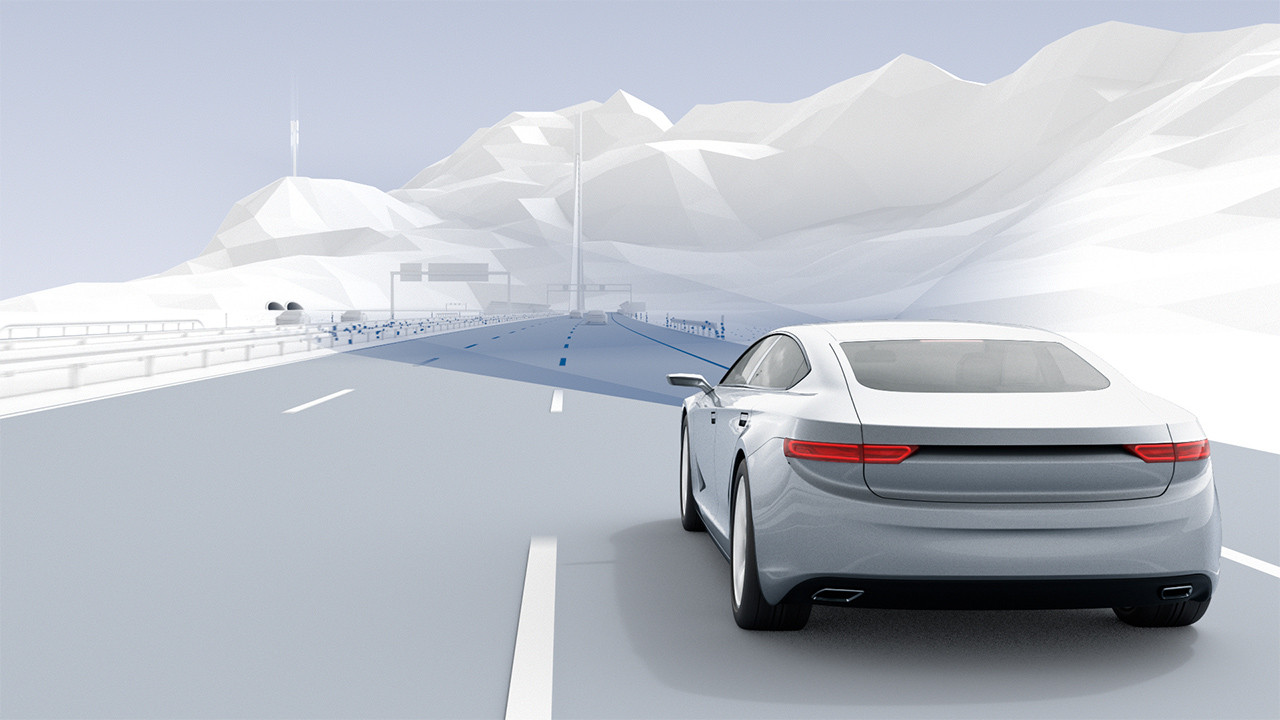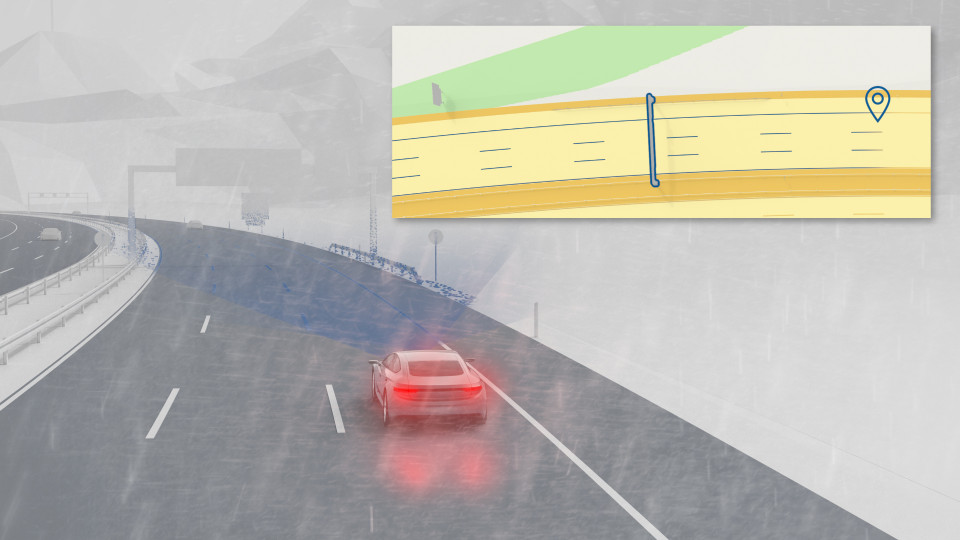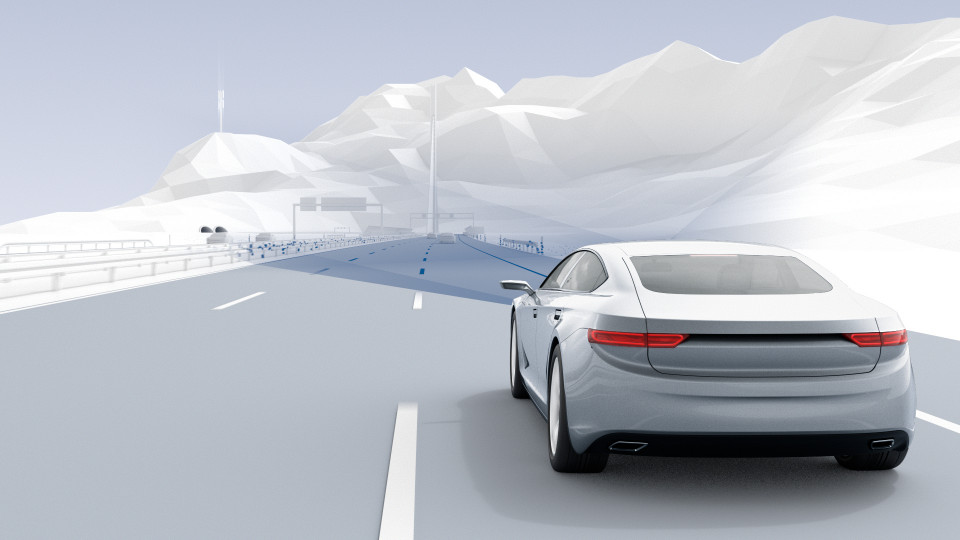Stuttgart, Germany – Is it possible to help automated driving achieve a breakthrough just by driving? Sure – at least for drivers behind the wheel of a VW Golf 8. As they drive along, these vehicles can provide information for the Bosch road signature. The cloud-based service uses real-world traffic data from sensors to provide multilayer high-resolution maps and keep them up to date. For driving that is becoming increasingly automated, this function is crucial. “We are pleased to be paving the way to tomorrow’s mobility today together with partners,” says Dr. Mathias Pillin, president of the Bosch Cross-Domain Computing Solutions division.
If cars are to drive on their own in the future, they will need highly accurate digital maps – and to know precisely where they are on those maps. This is exactly what the Bosch road signature offers: using information from radar and video sensors, as well as vehicle motion data, it augments common navigation maps with additional layers for vehicle localization and control. These additional layers are compatible with typical map formats. Data is currently being generated to set up the road signature. Starting in 2023, vehicles will feature the signature along with an initial number of services. Bosch plans to use current data to continuously expand the signature and keep it up to date. While the other map levels truly unfold their full potential especially in vehicles featuring Level 2 hands-free functions and higher, they also offer advantages at lower levels. “The more vehicles that provide information now and in the future, the larger and more robust the database will be for automated and assisted driving,” Pillin says.
Digital twin of the vehicle environment
VW is leading the way with the high-volume Golf 8 in Europe, with other vehicles to follow. Specifically, the solution works like this: while on the road, the vehicle fleet uses surround sensors to generate information about landmarks such as road signs, guardrails, curbs, and lane markings. The vehicles send the data completely anonymously via the VW cloud to the Bosch cloud. Furthermore, only the information that is required for the map layers is transmitted. The road signature is created in the Bosch cloud on this basis, producing a kind of digital twin of the real environment.
Thanks to the Bosch road signature, vehicles can determine their position with a high degree of accuracy: in real time, each vehicle compares the information currently provided by its surround sensors with that of its digital twin. This comparison enables the cars to accurately determine their position in the lane down to a few decimeters relative to the highly accurate map. The use of radar means that localization works reliably even in adverse weather conditions such as fog, rain, and snow – conditions which make it difficult, if not impossible, for a camera to perceive its surroundings.
Natural driving behavior of automated vehicles
In addition, the road signature enables safer and more convenient lateral and longitudinal guidance of automated vehicles, as it contains information not only about landmarks, but also about road geometry, lane layout, road signs, and speed limits. It even includes typical driving behavior at specific locations: for instance, how do human drivers approach a curve? When do they step on the brakes before an intersection? What do they do when they change lanes prior to making a turn? To answer such questions, the service uses motion data such as speed, steering angle, and wheel speed. In the future, the road signature will provide vehicles with this information – and thus help make automated driving an experience that is as natural, comfortable, and safe as possible. Bosch and VW are moving closer to this goal with every kilometer driven.
Mónika Hack
+36 70 510 5516
Mobility Solutions is the largest Bosch Group business sector. It generated sales of 42.1 billion euros in 2020, and thus contributed 59 percent of total sales from operations. This makes the Bosch Group one of the leading automotive suppliers. The Mobility Solutions business sector pursues a vision of mobility that is safe, sustainable, and exciting, and combines the group’s expertise in the domains of personalization, automation, electrification, and connectivity. For its customers, the outcome is integrated mobility solutions. The business sector’s main areas of activity are injection technology and powertrain peripherals for internal-combustion engines, diverse solutions for powertrain electrification, vehicle safety systems, driver-assistance and automated functions, technology for user-friendly infotainment as well as vehicle-to-vehicle and vehicle-to-infrastructure communication, repair-shop concepts, and technology and services for the automotive aftermarket. Bosch is synonymous with important automotive innovations, such as electronic engine management, the ESP anti-skid system, and common-rail diesel technology.
The Bosch Group is a leading global supplier of technology and services. It employs roughly 395,000 associates worldwide (as of December 31, 2020). The company generated sales of 71.5 billion euros in 2020. Its operations are divided into four business sectors: Mobility Solutions, Industrial Technology, Consumer Goods, and Energy and Building Technology. As a leading IoT provider, Bosch offers innovative solutions for smart homes, Industry 4.0, and connected mobility. Bosch is pursuing a vision of mobility that is sustainable, safe, and exciting. It uses its expertise in sensor technology, software, and services, as well as its own IoT cloud, to offer its customers connected, cross-domain solutions from a single source. The Bosch Group’s strategic objective is to facilitate connected living with products and solutions that either contain artificial intelligence (AI) or have been developed or manufactured with its help. Bosch improves quality of life worldwide with products and services that are innovative and spark enthusiasm. In short, Bosch creates technology that is “Invented for life.” The Bosch Group comprises Robert Bosch GmbH and its roughly 440 subsidiary and regional companies in some 60 countries. Including sales and service partners, Bosch’s global manufacturing, engineering, and sales network covers nearly every country in the world. With its more than 400 locations worldwide, the Bosch Group has been carbon neutral since the first quarter of 2020. The basis for the company’s future growth is its innovative strength. At 129 locations across the globe, Bosch employs some 73,000 associates in research and development, of which nearly 34,000 are software engineers.
Additional information is available online at www.bosch.hu, iot.boschblog.hu, www.bosch.com, www.iot.bosch.com, www.bosch-press.com, http://www.twitter.com/BoschPress.





